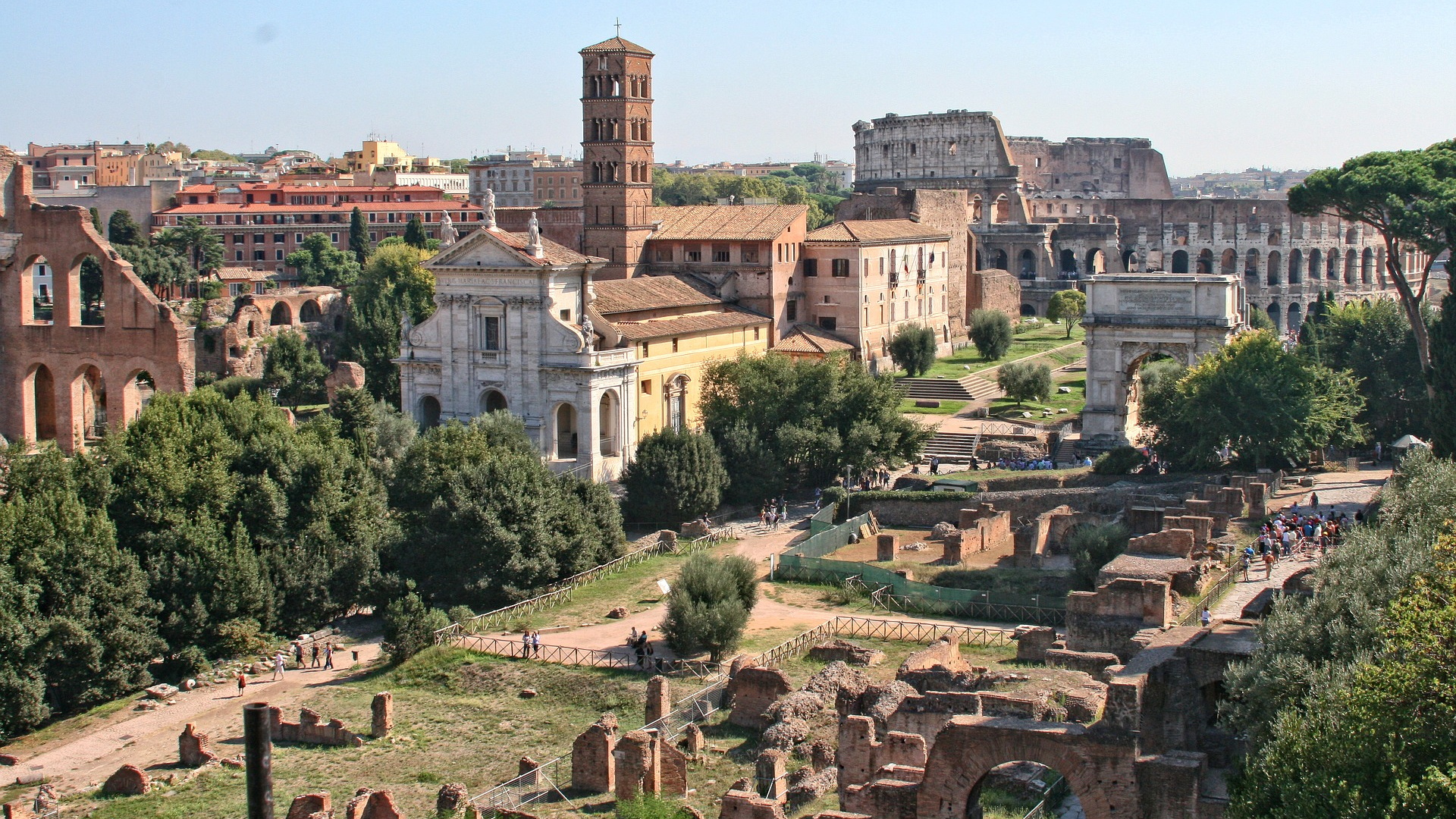
Parco Archeologico del Colosseo includes the extraordinary ancient complexes forming part of the central archaeological area, namely Colosseum, Roman Forum and Palatine.
The Anfiteatro Flavio is the most famous, large and important amphitheatre in the world, better known as the Colosseum, because of a colossal statue that stood nearby. It was built in the first century AD at the behest of the emperors of the Flavian dynasty and hosted, until the end of the ancient age, shows of great popular appeal, such as hunts and gladiator games. The spectators were offered surprising scenographies using ingenious machines, as well as various services.
The Roman Forum, once a marshy area, only from the end of the 7th century BC, with the reclamation of the valley, began to take its present form to become the centre of public life for over a millennium. Over the centuries the various monuments were built: first, the buildings for political, religious and commercial activities, then, during the second century BC, the civil basilicas where the judicial activities took place. By the end of the Republican age, the ancient Roman Forum had become insufficient to carry out the function of administrative centre, and it started to become a monumental place of representation of the city. During the Imperial Age, the halls and temples were rebuilt and only a few others were added: the Temple of Vespasian and Titus and that of Antoninus Pius and Faustina dedicated to the memory of the deified emperors, and the monumental Arch of Septimius Severus, built at the western end of the square in 203 AD to celebrate the victories of the emperor over the Parthians. The last great intervention was carried out by the Emperor Maxentius in the first years of the 4th century AD when the Temple dedicated to the memory of his son Romulus and the imposing Basilica on the Velia were erected. The last monument built in the Forum was the Column erected in 608 AD in honour of the Byzantine Emperor Foca.
The city of Rome was founded on the Palatine Hill, where archaeological discoveries revealed the remains of Iron Age settlements. The hill was the site of important cults linked to the tradition of the origins, including that of Lupercus, celebrated in a cave on the slopes of the hill, where the she-wolf allegedly nursed the divine twins Romulus and Remus, and the cults of Victory and the Magna Mater (Cybele). Until the end of the Republican age the hill was mainly the residential quarter of the Roman ruling class and, during the Imperial Age, it became the aristocratic quarter of the city with elegant residences characterized by exceptional pictorial and floor decorations, such as those preserved in the House of the Griffins. Cicero, Marcus Anthony and Augustus, among others, lived there, who chose the hill to reconnect with the memories of the founder. The choice of the first emperor, in fact, was followed by his successors and with the construction of several palaces, including the House of Livia, the Domus Tiberiana, the Domus Transitoria, the Domus Aurea and finally the Domus Flavia, divided into a public and a private sector, known as Domus Augustana, the Palatine was transformed into a grand complex that was the 'palace' of the emperors. The name of the Palatinum hill became, in fact, synonymous with the palace.
Among the most eloquent testimonies of the late Roman Renaissance and Baroque, how can we fail to mention the Nymphaeum of the Rain in the Horti Farnesiani on the Palatine? Situated in the heart of Europe's most famous aristocratic gardens, it was designed in its present form by Girolamo Rainaldi. Inspired by the productions of ancient Rome and the early Renaissance, he created it for the Farnese family, who, in the summer season, used it as a space for feasting and pleasure. The Nymphaeum consisted of a large, semi-underground room decorated with frescoes and ancient sculptures. Thanks to its private location, guests could enjoy the refreshing semi-darkness and listen to the harmonious resonance of rainwater in the Rain Fountain, designed precisely to reproduce the natural trickling of water from the sky. Closed to the public for many decades for conservation reasons, the Nymphaeum of the Rain is now accessible after a significant restoration and enhancement project.
The Arch of Constantine, located along the route taken by the triumphs, in the stretch between the Circus Maximus and the Arch of Titus, is the largest honorary arch that has come down to us and represents a synthesis of the ideological propaganda of the Constantinian era. The arch in fact celebrates the triumph of Emperor Constantine over Maxentius, which took place on 28th October 312 A.D. following the battle of the Milvian bridge. The inscription on the central archway narrates that the monument was solemnly dedicated by the Senate to the emperor in memory of that triumph and on the occasion of the tenth anniversary of the empire at the beginning of the tenth year of its reign, on 25 July 315 AD. The decoration in relief marble slabs was conceived and realized in the Constantinian age according to a unitary project, using mostly bare materials from other imperial monuments of the age of Trajan, Hadrian and Marcus Aurelius. All the faces of the emperors that appear in the reliefs have been remodelled in the likeness of Constantine, with the nimbus to connote his imperial majesty. The many images that populate the arch are united by a precise thread: the celebration of the political design of restoration of the empire wanted by Constantine. He wanted to be celebrated and recognized as the new arbiter of Rome's fate and legitimate triumphant over his rival Maxentius.
Near the Arch of Constantine are the remains of the so-called Meta Sudans, a monumental conical fountain built in the Flavian Age at the end of the 1st century AD by the Flavian emperors, therefore contemporary to the construction of the Arch of Titus and the Colosseum. The monumental structure derives its name from the conical shape that remembered a sort of column of the ancient Roman circus and from the fact that the water dripped like sweat. The fountain remained in use until the 5th century AD when the laying of the Colosseum Valley began to obstruct the water outflow canals.The imposing ruin was then demolished in the 1930s to create via dei Trionfi.
It was possible to reconstruct its original appearance, thanks to the monetary representations, the photos of the late 19th century and the drawings made at the time of demolition. It was a fountain 18 meters high, with a base cylinder, covered with marble and perhaps divided into niches, with a conical upper element, surmounted by a flower or a sphere. The structure was in a very important urban area, at one of the summits of the sacred border of the Romulean city, the crossroads of two streets connected to the triumphal route, and the meeting point of four Regions of the Augustan Rome. In the same area, the emperor Augustus already built a smaller fountain, mentioned by the sources and found during recent archaeological excavations.
The Flavian Amphitheatre (The Colosseum)
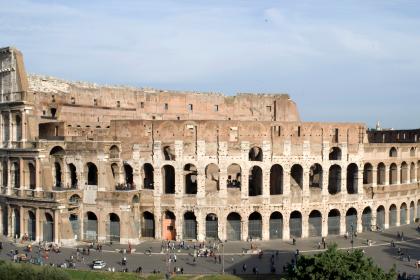
 Condividi
Condividi
The Roman Forum and the Palatine
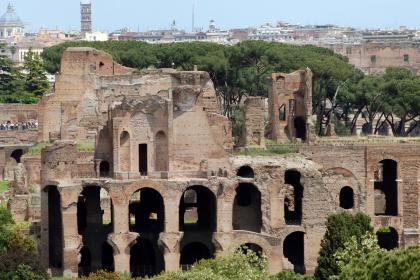
 Condividi
Condividi
Archaeological area of the Imperial Fora
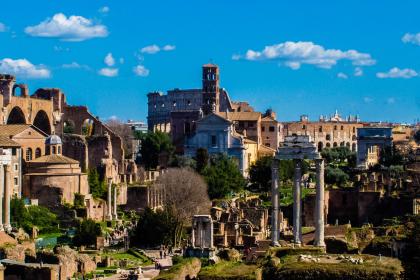
 Condividi
Condividi
The Trajan's Markets - The Museum of the Imperial Fora
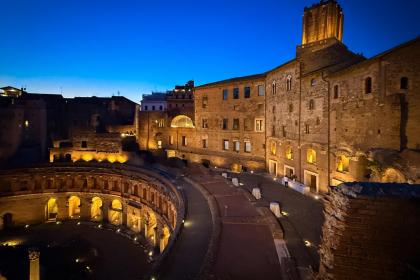
 Condividi
Condividi
Arch of Costantine
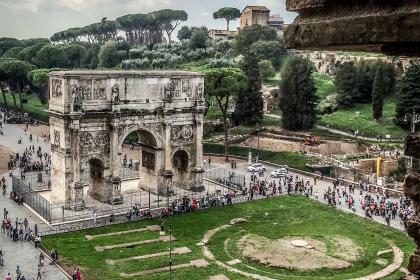
 Condividi
Condividi
Information
 Condividi
Condividi
Location
To find out about all accessibility services, visit the Rome accessible section.











































